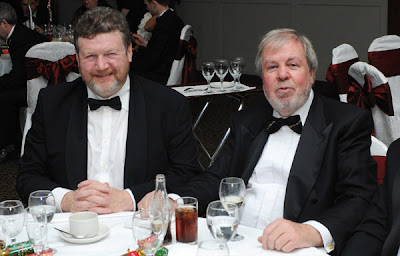At first, the danger seemed slight. There is no real problem with modernizing Holmes – he is an archetype, a man for all seasons. The classic Basil Rathbone movies of the 1940s were moved to modern times, when Holmes moved from the Victorian peasoupers to the Churchillian beaches and landing grounds to face down the Nazi menace.
Bringing Holmes to 21st Century London is one of the many reasons why the current BBC Sherlock is the triumph that it is. The character remains constant though the times may change.
The move to New York and the sex change of honest Doctor Watson in Elementary are also permissible. The writers have to do something to make it different. The biggest danger, in the early stages, seemed to be the tin ear of writers who over-egged the English pudding.
Holmes refers to the tube, rather than the subway. He refers to the baseball team as the Metropolitans of New York, rather than the New York Mets. That’s because he’s English, you see.
However, once the game’s afoot, Holmes speaks fluent American. “I need you to send this to the lab,” says Holmes to a flatfoot. Only Americans consider the subjective “I need” as an imperative. How has Holmes picked this up but can’t call the subway the subway?
But sloppy writing is a flesh wound compared to the evisceration that the writers seem determined to inflict on the misfortunate, unsuspecting Holmes. Part of the backstory of Elementary is that Holmes is a recovering addict; Watson is a doctor hired to keep an around-the-clock eye on him. Fair enough.
What is not fair enough is the burgeoning plot development that Holmes will flower as a fully-rounded human being under Doctor Joan Watson’s loving ministrations. In the second episode, the sensitive viewer is appalled to discover that Holmes has taken something from his AA meetings, and is now a “better person” as a result.
Watson complements Holmes on the “progress” he’s making as a person, and this isn’t even the worst of it. As Watson retires to her boudoir, we see Holmes staring at his childhood violin that Watson found earlier. As Watson lies in bed, she hears the first plaintive scrapes and smiles at the thought of Sherlock Holmes getting back in touch with his soul and becoming a more rounded person. That we are spared stock imagery of flowers blossoming can only be the grace of a merciful God.
It’s not hard to plot the coming years. Love rears its ugly head and, by Season 5, Elementary has become the Brady Bunch as Holmes and Watson’s brood perform precocious feats of deduction to the delight of their parents and the agonized rictus horror of anyone with any taste whatsoever.
They could even have a Christmas special. The grandparents can meet for the first time since the wedding – Holmes's parents are played by Joanna Lumley and the guy who played Lord John Marbury in the West Wing, while Mr and Mrs Watson are George Takei and Barbara Bloody Streisand.
The eldest and most precocious of the children, Chet Holmes, deduces that Uncle Mycroft is running a covert op between the CIA and MI6, and hilarity ensues. Ricky Gervais will be cast against type as Mycroft – to keep things edgy, you know. Challenging assumptions.
Sherlock Holmes – learning, hugging and growing. What George Constanza expertly dodged for so long is to be the grim fate of the world’s first consulting detective. How he must long for the sweet release of the Reichenbach Falls.







